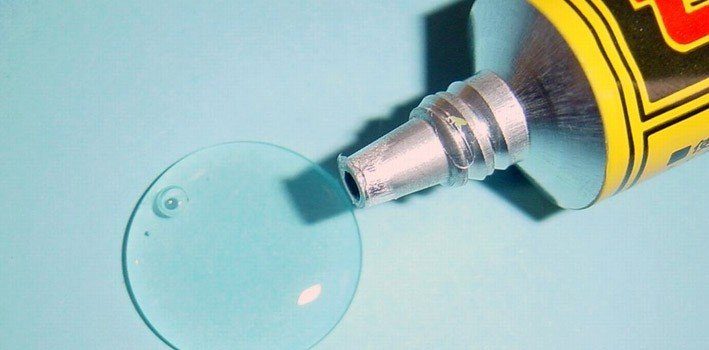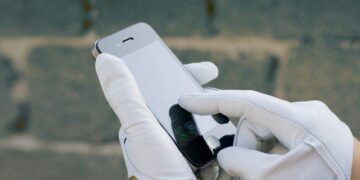Most days we cruise through life not sparing a thought to where the many inventions in our life come from.
Many of these inventions are purposeful, but a select few are accidental.
So here are my top ten accidental discoveries and inventions that have helped shape the world as we know it.
Fireworks

Roughly 2,000 years ago in China, a cook was experimenting with charcoal, sulfur, and saltpeter.
Three items commonly found in kitchens back then. When he found that the mixture he’d created burned.
He played about a bit with his new-found fire-powder, as any self-respecting kitchen-alchemist would, and found that when compressed into a bamboo tube it exploded.
After a few more combinations the cook found that he could cause different colored explosions and different effects to create what we now know as fireworks.
Velcro

Out on a hunting trip in 1948 with his trusty canine companion, Swiss engineer George de Mestral noticed the annoying tendency burrs had to stick to his socks and his dog’s fur.
Back at home, giving the burrs an examination underneath his microscope, George noticed the tiny ‘hooks’ that stuck burrs to both fabric and fur.
Mestral experimented for years with a variety of textiles before having a play with the newly invented nylon, and Velcro was born.
However, it wasn’t until roughly two decades later that Velcro’s popularity boomed after NASA took a particular liking to the stick-and-rip stuff.
Safety Glass

The year is 1903 and French chemist Édouard Bénédictus is chilling out in his lab, mixing up some potions, when he accidentally knocks a flask off his desk, sending it to fall to the ground and shatter… or not.
Bemused by the way the flask had not smashed into a hundred pieces on impact, Édouard stooped down to take a closer look.
Upon inspection the chemist realized that it had recently contained plastic cellulose nitrate and that this had coated the inside of the glass flask, thus keeping it from shattering upon impact.
Inspired by this mere mishap, Édouard Bénédictus went on to invent Safety Glass, something used on a mass-global level even today.
Super Glue

In 1942, Dr. Harry Coover set out to create a new precision rifle sight but failed epically.
The substance he created, cyanoacrylate, was an utter failure – it stuck to everything.
Deflated and dejected, Coover gave up and moved on, his invention forgotten.
Fast forward 6 years and Coover is overseeing an experimental new design for airplane canopies.
Once again he found himself sticking to things because of that damned cyanoacrylate!
This time, however, Coover had a light-bulb moment and observed how this substance formed incredibly strong bonds between objects with no heat applied.
This set him and his team to thinking, and with a little tinkering, sticking objects in the lab together, they realized they’d found a use for this annoying gloop.
Coover whacked a patent on the discovery and in 1958, 16 years after he’d first gotten stuck, Super Glue was being sold on shelves all around the world.
Tea Bags

The teabag was the accidental invention of American tea merchant Thomas Sullivan.
In 1908, Sullivan started sending samples of tea to his customers in small silken bags.
Many of his customers assumed that these samples were to be used in the same manner as metal tea infusers, by putting the entire bag into the teapot.
After sending out his samples, Sullivan received comments from his customers that the mesh on the silk was too fine.
So he started to develop sachets made of gauze; the first purposely made tea bags.
During the 1920s these were commercialized and they grew in popularity.
Lo and behold, the tea bag was invented!
Penicillin

Life before antibiotics was certainly grim. And short.
Infections ran rampage, especially STDs, making simple diseases that we wouldn’t bat an eyelid at nowadays a death sentence.
Luckily for us in 1929 a young Scottish bacteriologist called Alexander Fleming went on holiday, and before he left he must’ve had his holiday-head on because he forgot to cover a petri-dish of Staphylococcus he was cultivating in his lab.
When tidying upon his return, Fleming noticed that a mold in the dish had killed off many of the other bacteria.
He identified this mold as Penicillium notatum, and researched it further to find out that it could kill other bacteria and could be given to small animals without them becoming ill.
A decade down the line, Howard Florey and Ernst Chain picked up where Fleming left off, isolating the bacteria-slaying substance and turning it into a fully administrable medicine.
For their efforts in medicine and science, the trio was awarded the Nobel Prize – and rightly so!
The Microwave

Percy Spencer, a man orphaned at 18 months old and taken out of school at 12 to work in a paper mill, was the accidental inventor of the Microwave Oven.
An engineer at Raytheon after his WWI stint in the American Navy, Spencer was known to all as an electronics genius.
Fiddling about with a microwave-emitting magnetron, a piece commonly found in the innards of radar arrays, Percy suddenly felt a strange sizzling sensation in his trousers.
Startled, he took a pause and found that the chocolate bar in his pocket had started to melt.
Figuring to himself that the microwave radiation of the magnetron was to blame, he immediately set out to reap the potential.
The end-game was the Microwave Oven, savior of students and single-men worldwide.
Dynamite

Humanity didn’t just figure out how to blow things up with the invention of dynamite – nitroglycerin itself had been around for years.
But as Arzt from Lost will tell you: “Nitroglycerin is the most dangerous and unstable explosive known to man”.
Alfred Nobel himself can testify to this.
He worked with nitroglycerin in a series of experiments, which tragically ended in a fatality that claimed the lives of him, his younger brother, and a few others.
Knowing how unstable it could be, Nobel continually tested methods for the safe transportation of nitroglycerin.
Whilst transporting some of the deadly explosives, a can fell from a crate, spilling its contents all over the nitroglycerin.
Nobel noticed that the can’s contents, a sedimentary type of clay called Kieselguhr, absorbed the nitroglycerin perfectly.
Inspired by this simple coincidence, Nobel ingeniously developed a formula where the explosive could be mixed with the clay without hindering its explosive power.
He patented his discovery, naming it dynamite, and revolutionized both the world of construction and the world of warfare.
Viagra

In 1998, pharmaceutical giant Pfizer set out to cure Angina Pectoris, or spasms of the heart’s coronary arteries, in plain English.
In order to do this, they developed a pill named UK92480.
However, UK92480 failed at its desired effect rather terribly, but the secondary effect of their little blue pill was certainly arousing, pun intended.
That pill went on to become one of the world’s biggest-selling drugs, Viagra.
In fact, it is estimated that seven Viagra tablets are sold worldwide every second – that’s 604,800 a day!
Insulin

Although the discovery of insulin was not directly an accident, the discovery that allowed researchers to, later on, find insulin was an accident.
In 1889, two doctors at the University of Strasbourg were trying to understand how digestion was affected by the pancreas.
In order to do this, they removed a healthy dog’s pancreas, a few days later they noticed that flies were swarming around the dog’s urine. They decided to test the urine and found sugar in it.
This led them to the realization that by removing the pancreas they had given the dog diabetes.
The two doctors never realized that what the pancreas produced regulated blood sugar.
It wasn’t until a series of experiments at the University of Toronto between 1920 and 1922 that researchers were able to isolate a pancreatic secretion that they called insulin.
Thus turning diabetes from certain death into a treatable condition.
















